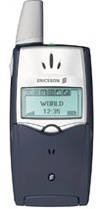One of my favorite topics is cellular network capacity. I posted an example a while back on the 1 kb/s 3G surfer. At the time I excluded VoIP as part of my application mix as it increases network traffic quite a bit. Today I found some interesting material which sheds some light on this part of the story:
Wireless Networks have a particular problem with Voice over IP. While traditional circuit switched traffic was optimized on all layers of the protocol stack to be transferred as efficiently over the air interface as possible, achieving the same effect for Voice over IP is very difficult due to the decoupling of the different network layers on the IP protocol stack. Thus, a VoIP call today consumes at least four times as much bandwidth on the air interface than a circuit switched voice call. In other words, if everybody started to use VoIP over wireless today, network capacity for voice calls would shrink to only a quarter of what it is today.
Now Ericsson has released an interesting slidepack on the topic which targets the non geek investment community but which nevertheless contains some interesting numbers on wireless network enhancements and optimization for VoIP in the future: As described above, Ericsson’s slide pack shows on page three that UMTS networks today could only provide 20% of the voice capacity with VoIP compared to standard voice calls. So that’s close to my number above. With HSPA (I think they refer to HSDPA + HSUPA) capacity increases to 70% if IP robust header compression (ROHC) is used. They then go on to claim that with efficient signaling (whatever that is…) and improved scheduler (what improvements?) and optional GRAKE2 (again what is that?) VoIP capacity can be pushed to 140% of today’s standard voice capacity. Finally the next evolution of UMTS called LTE (Long Term Evolution) targets 200% of current voice traffic for VoIP in the same bandwidth.
Not sure what the improvements are they are talking about as they don’t give any further explanations but it seems we are getting somewhere in due time. VoIP VoIP Hurray!




